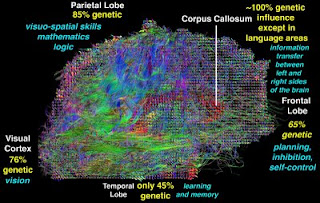The looming crisis in human genetics

THE ECONOMIST Nov 13th 2009 From The World in 2010 print edition Full article: http://www.economist.com/displaystory.cfm?story_id=14742737 By Geoffrey Miller University of New Mexico In a nutshell: the new genetics will reveal much less than hoped about how to cure disease, and much more than feared about human evolution and inequality, including genetic differences between classes, ethnicities and races.... Dozens of papers will report specific genes associated with almost every imaginable trait—intelligence, personality, religiosity, sexuality, longevity, economic risk-taking, consumer preferences, leisure interests and political attitudes. The data are already collected, with DNA samples from large populations already measured for these traits.... When sequencing costs drop within a few years below $1,000 per genome, researchers in Europe, China and India will start huge projects with vast sample sizes, sophisticated bioinformatics, diverse trait measures and detaile...

